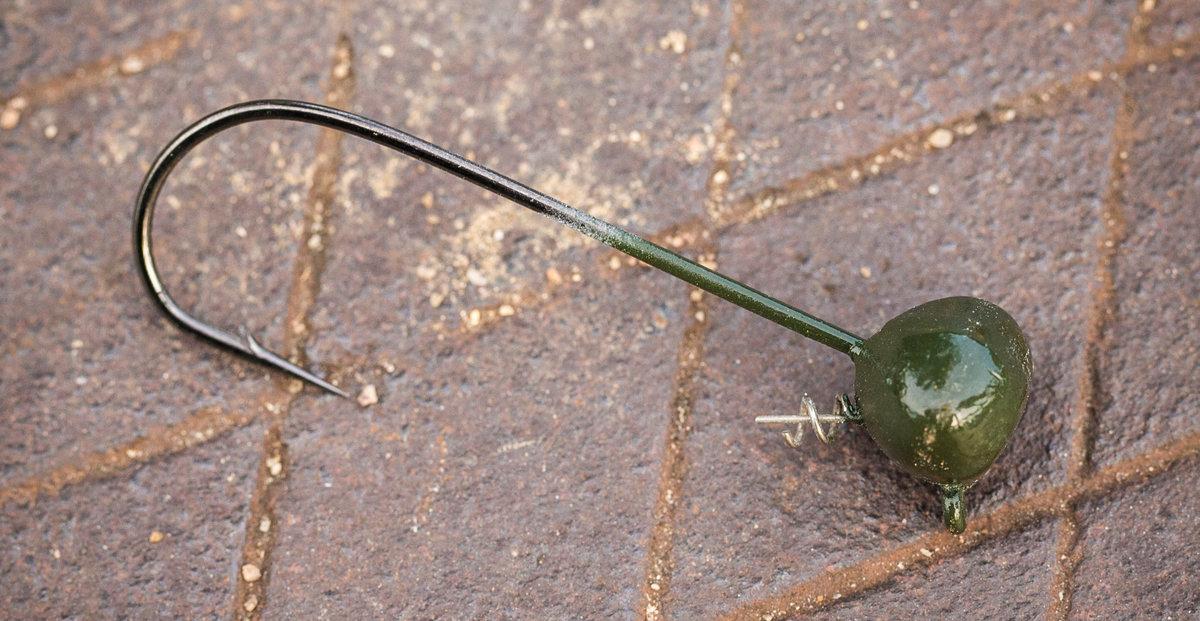How To Use A Shaky Head To Catch Finicky Fish All Year Long
A soft plastic lure matched with a shaky head jig is probably the ultimate finesse bait for finicky or bass affected by fishing pressure.
The popularity of shaky head fishing has prompted tackle manufacturers to create a wide array of jighead sizes and styles. The key to shaky head fishing is using as light of a jighead as possible and still keep the bait in contact with the bottom. A 1/16- or 1/8-ounce jighead works best for shaky head tactics with a finesse worm, but you might have to upgrade to a 1/4-ounce head on windy days or when fishing in current to prevent your line from bowing and losing the feel of the bait.
Which Shaky Head Type Should I Use?
Two popular types of head designs for shaking soft plastic baits are the ball head and standup head. The round jighead gives the bait a rocking action as you work it through cover since the head rolls back and forth. This style of jighead works best for fishing gravel bottoms and open water banks. The best lures to match with this style of jighead are 4- to 6-inch finesse worms or stickworms. Whenever you are fishing around shad, throw a stickworm on a shaky head to create the same darting action as the baitfish.
The standup jighead is ideal for shaking 6- to 8-inch “trick” worms and soft plastic jerkbaits along riprap and other broken rock bottoms. It slides through rocks with minimal hang-ups, and you can fish the baits slowly without much shaking since the jighead keeps the lure standing up straight. The 1/8- and 3/16-ounce jigheads work best for fishing shallow rocks, but you should switch to a 5/16-ounce head for probing water deeper than 15 feet.
Shaky jigheads are also available with different size hooks. When fishing 4-inch finesse worms, try a jighead with a 3/0 or 4/0 hook, but switch to a head with a 5/0 hook for 6-inch or larger worms.
What Should I Put On My Shaky Head?
A finesse worm is the top choice of most anglers for shaky head fishing, but a variety of soft plastics performs well with a shaky jighead. Stickworms, soft plastic jerkbaits, plastic lizards and creature baits are other options for shaky head fishing. One of my favorite tactics for catching postspawn bass suspended under docks is to rig a beaver-style bait on a 3/16- or 1/4-ounce shakey head. I throw the combo to shady areas of the docks and as the lure descends I give it a few shakes to make the tail flutter to imitate bluegill or shad darting around the docks.
Super-sizing a shaky head has become an effective tactic for flipping into heavy cover or fishing deep off-shore structure. For flipping into shallow cover select 1/4-, 3/8- or 5/16-ounce standup jigheads tipped with magnum-sized paddletail plastics, creature baits or craw worms. Let the lure fall to the bottom and work it through the cover with short hops to trigger strikes.
A 5/8-ounce standup shaky jighead with an 8-inch paddletail worm presents a different look to bass when dragged along the bottom of offshore structure. With this magnum shaky head setup, you can catch bass as deep as 20 to 25 feet.
What Color Shaky Head Should I Use
Since shaky head fishing is mainly a clear water tactic, soft plastics in natural colors are the best bets. My favorite colors for shaky head lures are green pumpkin, watermelon/red flake and pumpkinseed.
No matter what lure you use, the key to rigging a shaky head combo is to make sure the lure sits straight on the hook. If the lure has a little crook in it the line will frequently twist and eventually weaken. When rigged correctly the point of the hook should be barely under the skin of the lure body to make the combo weedless. Several shaky jigheads on the market today feature screw or peg keepers that make rigging the lure correctly an easy task.
When Should I Use A Shaky Head?
Shaky head tactics will catch bass year-round, but the technique works best for me in the spring during the spawn and postspawn. A shaky head finesse worm is ideal for sight fishing, whether bass are on spawning beds or just cruising in the shallows. I also like to pitch a shaky head worm to the black clouds of bass fry to catch the adult bass guarding its offspring.
Early fall is another great time to fish a shaky head around docks and sunken brush piles. Bass move up from the depths when the water surface starts cooling but the fish become tough to catch because they are suspended under the docks and above the brush piles. However, you can still catch these suspended bass by dropping a slow-falling shaky head finesse worm in front of their noses. Not a whole lot of shaking goes on with this tactic since strikes usually occur as the lure is falling.
Updated May 17th, 2020 at 6:39 AM CT


